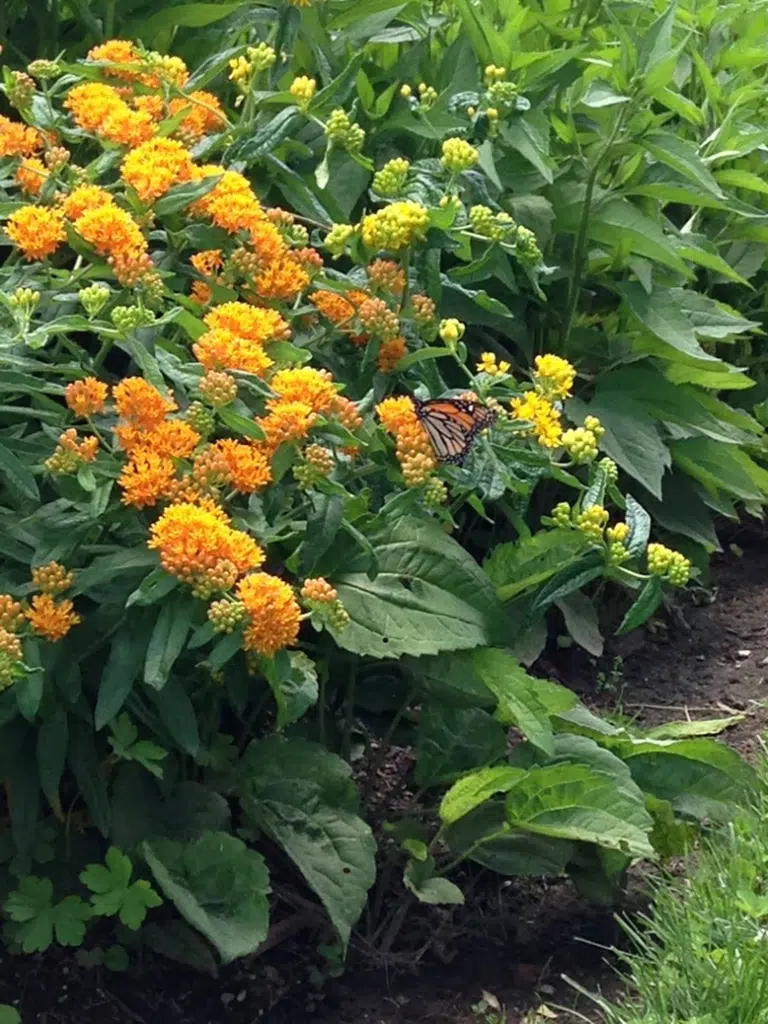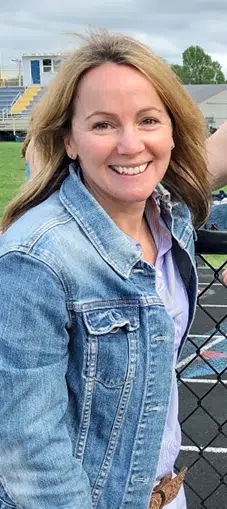
Milkweeds (Asclepias spp.) are beneficial host plants for the Monarch butterflies. The plant provides the adult female Monarch with a place to lay her eggs. Once those eggs hatch the caterpillar has exactly what it needs to reach adulthood. Since milkweed is so important to the survival of monarchs, it should be a staple in everyone’s garden. And with so many species available it can fit just about any garden site.

Female monarchs usually lay their eggs on the underside of milkweed leaves where it takes three to five days to hatch. Once the egg hatches the caterpillar will emerge. When the caterpillar hatches it is about one cm in size and will grow to be five cm in size. Milkweed contains toxic cardiac glycosides to which monarchs have developed a resistance. While the caterpillar eats the leaves it also becomes poisonous. It makes the caterpillar unpalatable to predators. After eating for eleven to eighteen days the caterpillar will go into its chrysalis. While in the chrysalis it will change from its pupa stage into an adult. This stage takes eight to fourteen days. This entire process is called complete metamorphosis.
The Arlene and Arthur Holden Butterfly Garden has six different species of Milkweed (Asclepias spp.) all with different cultural needs.

Swamp milkweed (Asclepias incarnata) is a great choice for wet areas. Hence the name ‘swamp’ milkweed. This is a good plant for areas along a pond or just in a wetter area of the garden. It also does just fine in medium garden soil. It likes full sun, and it has pink fragrant flowers that bloom in July. Swamp milkweed grows to about three feet tall and two feet wide. Monarchs use milkweed as a host plant, but other pollinators use it as well for nectar.

Purple milkweed (Asclepias purpurascens) grows to be about two to three feet tall with a spread of one to two feet wide. It likes full sun but will tolerate partial sun. Purple milkweed has a beautiful purple flower that blooms in June and grows best in dry to average soils. Once established, this beauty can form a colony.

Showy milkweed (Asclepias speciosa) is like common milkweed in height and spread about three feet tall and two feet wide. The June blooming flowers, however, are larger and more star like. Showy milkweed is a less aggressive alternative to common milkweed. Therefore, better suited for a garden. This plant does well in soils that are medium to moist and does best in full sun.

Sullivant’s milkweed (Asclepias sullivantii) is another species that we have here at the Butterfly Garden. It is like the other milkweeds, but one thing that sets it apart is the way the leaves attach to the stem in and upright position. The leaves are thick almost succulent. It has a pink flower that blooms in July and t will grow to about three feet tall. This species that was once threatened in other states, forms small colonies in the garden. It can tolerate moist to wet soils, and it thrives in full sun.

Common milkweed (Asclepias syriaca) is the most well-known milkweed. It is known for its large seed pods that are wind dispersed in fall. This species needs a disturbed site grow. It does not thrive with a lot of competition. If it is given room to grow it will form large colonies. The flowers on common milkweed are very fragrant. Common milkweed grows to about three feet and likes medium to sandy soils that are moist. This milkweed does best in full sun.

Butterfly weed (Asclepias tuberosa) is a smaller milkweed measuring only one to two feet tall. It has orange flowers that bloom in June and is a little more behaved in the garden. Butterfly weed is a clump forming plant, but it will seed in if you let it. Once butterfly weed is established it is best to keep it where it is because it has a deep taproot and does not transplant well. It likes medium to sandy soil and will tolerate average to dry moisture conditions.

Lori Gogolin
Horticulturist
Lori Gogolin has been a horticulturist for Holden Forests and Gardens since 2010. She creates and manages healthy habitats for plants and pollinators in the Arlene and Arthur S. Holden Jr. Butterfly Garden. Lori has a degree in horticulture from Kent State University.













